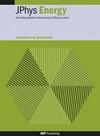可再生尿素生产的技术经济优化,促进可持续农业和二氧化碳利用
IF 6.3
3区 材料科学
Q1 ENERGY & FUELS
引用次数: 0
摘要
尿素是最常用的氮肥,因为它易于储存、运输和施用。尿素是由氨和二氧化碳(CO2)混合制成的,而目前这两种物质都主要来自化石燃料。最近,利用可再生动力电解法生产氨的势头为以更可持续的方式生产尿素和利用外部来源的二氧化碳提供了机会。在这项工作中,我们提出了一个技术经济优化模型,以最大限度地降低以这种方式生产尿素的成本。通过同时优化生产设施的设计和每小时的运行,该模型可根据可再生能源的可变性进行时变化学品生产。我们在明尼苏达州进行了一项案例研究,考虑了生物乙醇生产过程中副产品二氧化碳的使用。我们发现,在可实施的生产规模达到 25 万吨/年的情况下,可再生尿素目前的平准化成本介于 268 美元/吨-1 和 413 美元/吨-1 之间。这在传统尿素历史价格的范围之内,同时至少可降低 78% 的碳强度。预计到 2030 年,由于技术改进和电解生产规模的扩大,可再生尿素生产的经济效益明显,平准化成本低至 135 mt-1 美元,有利于尿素生产规模提高到 525 000 mt yr-1。最佳设施使用风能,氢气和氨气生产以灵活、随时间变化的方式运行,以最大限度地减少电池和氢气存储容量。由于中间氨缓冲储存成本相对较低,尿素生产接近稳定状态。进口甲烷和本地生产的氢气混合使用,为尿素合成过程中消耗的蒸汽提供热量。本文章由计算机程序翻译,如有差异,请以英文原文为准。
Techno-economic optimization of renewable urea production for sustainable agriculture and CO2 utilization
Urea is the most used nitrogen fertilizer due to its ease of storage, transportation, and application. It is made by combining ammonia and carbon dioxide (CO2), both of which are produced predominantly from fossil fuels at present. The recent momentum behind ammonia production using renewable-powered electrolysis offers an opportunity to both make urea in a more sustainable way and utilize CO2 from external sources. In this work, we present a techno-economic optimization model to minimize the cost of making urea in this way. The model allows for time-varying chemical production in response to renewable variability by simultaneously optimizing production facility design and hourly operation. We performed a case study for Minnesota considering the use of byproduct CO2 from bioethanol production. We found that the present-day levelized cost of renewable urea is between $268 mt−1 and $413 mt−1 at likely implementable production scales up to 250 000 mt yr−1. This is within the range of historical conventional urea prices while offering at least 78% carbon intensity reduction. Projecting to 2030, there is a clear economic case for renewable urea production with levelized cost as low as $135 mt−1 due to technology improvement and electrolysis manufacturing expansion, facilitating a urea production scale increase to 525 000 mt yr−1. Optimal facilities use wind energy, with hydrogen and ammonia production operating in a flexible, time-varying way to minimize battery and hydrogen storage capacities. Urea production operates near steady state due to the relatively low cost of intermediate ammonia buffer storage. A mix of imported methane and locally produced hydrogen are used to provide heat for steam consumed in the urea synthesis.
求助全文
通过发布文献求助,成功后即可免费获取论文全文。
去求助
来源期刊

Journal of Physics-Energy
Multiple-
CiteScore
10.90
自引率
1.40%
发文量
58
期刊介绍:
The Journal of Physics-Energy is an interdisciplinary and fully open-access publication dedicated to setting the agenda for the identification and dissemination of the most exciting and significant advancements in all realms of energy-related research. Committed to the principles of open science, JPhys Energy is designed to maximize the exchange of knowledge between both established and emerging communities, thereby fostering a collaborative and inclusive environment for the advancement of energy research.
 求助内容:
求助内容: 应助结果提醒方式:
应助结果提醒方式:


